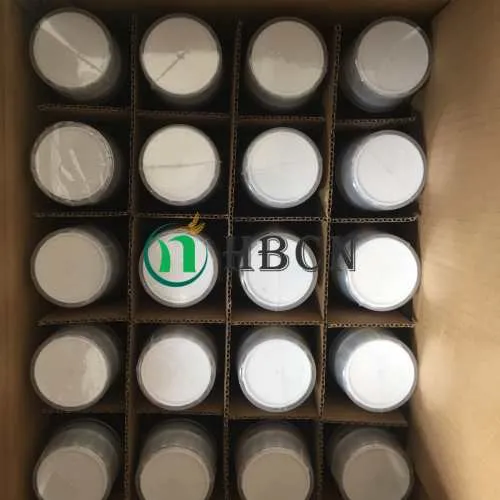
Dec . 24, 2024 14:09 Back to list
Formulation and Efficacy of Imidacloprid and Beta Cyfluthrin Insecticide Mixtures
Imidacloprid and Beta-Cyfluthrin A Powerful Duo for Insect Control
In the realm of pest management, finding effective solutions to combat agricultural pests is vital for ensuring crop health and maximizing yields. Among the various insecticides available today, Imidacloprid and Beta-Cyfluthrin stand out as powerful options that offer unique benefits when used separately or in combination. This article delves into the characteristics, mechanisms, and applications of these two insecticides, highlighting their roles in modern agriculture.
Understanding Imidacloprid
Imidacloprid is a systemic insecticide belonging to the neonicotinoid class. It works by interfering with the transmission of signals in the nervous system of insects, leading to paralysis and eventual death. One of the appealing aspects of Imidacloprid is its ability to be absorbed by plants, allowing it to provide protection from within. This systemic action ensures longevity in pest control, as the insecticide remains effective over an extended period, even after rainfall.
Imidacloprid is particularly effective against a wide range of pests, including aphids, whiteflies, and termites. Its relatively low toxicity to mammals makes it a preferred choice for many applications. However, concerns have been raised regarding its impact on non-target organisms, including pollinators like bees. As a result, the use of Imidacloprid has been subject to scrutiny, pushing researchers and farmers to adopt more integrated pest management strategies.
Exploring Beta-Cyfluthrin
Beta-Cyfluthrin, on the other hand, is a synthetic pyrethroid that mimics the natural insecticidal properties of pyrethrins found in chrysanthemum flowers. It acts as a contact and stomach insecticide, targeting the insect's nervous system. When pests come into contact with or ingest Beta-Cyfluthrin, it disrupts nerve function, resulting in paralysis and death.
imidacloprid beta cyfluthrin insecticide

This insecticide is known for its fast-acting properties and broad-spectrum activity, making it effective against a variety of pests, including caterpillars, beetles, and mosquitoes. Beta-Cyfluthrin is often favored for its lower persistence in the environment compared to other synthetic insecticides, which allows for more flexible application timing and reduces the risk of long-term ecological impacts.
The Synergy of Combination Use
When used together, Imidacloprid and Beta-Cyfluthrin create a synergistic effect that enhances the efficacy of pest control measures. The systemic nature of Imidacloprid complements the fast-acting, contact-killing properties of Beta-Cyfluthrin. This combination allows for a more comprehensive approach to pest management, targeting various life stages of insects while reducing the chances of resistance development.
In agricultural settings, this duo can significantly improve crop protection strategies. For instance, applying both insecticides in tandem can provide immediate knockdown of existing pest populations while also delivering prolonged protection through the systemic action of Imidacloprid. This is particularly important in crops vulnerable to heavy infestations where prompt control measures are essential.
Considerations and Best Practices
Despite their effectiveness, it is crucial for farmers to use Imidacloprid and Beta-Cyfluthrin judiciously. Integrated Pest Management (IPM) strategies that incorporate biological control, crop rotation, and careful monitoring of pest populations can enhance the sustainability of pest control efforts. Additionally, adherence to application guidelines and consideration of environmental impacts will help mitigate potential risks to beneficial organisms.
In conclusion, Imidacloprid and Beta-Cyfluthrin represent a formidable combination in the arsenal of pest control methods available to modern agriculture. Their distinct modes of action, coupled with the advantages of concurrent application, make them valuable tools for managing pest populations effectively. By integrating these insecticides into comprehensive management programs, farmers can protect their crops while ensuring environmental sustainability.
-
Herbicide Mesotrione: Advanced Herbicide Solutions for Corn Field Weed Control
NewsJul.12,2025
-
Buy Penoxsulam Herbicide - Selective Weed Control Solution for Lawns & Crops
NewsJul.08,2025
-
Malathion and White Oil Effective Insecticide for Citrus & Ornamentals
NewsJul.08,2025
-
Best Section Fungicide Solutions Effective Carbendazim & Copper Fungicides for Citrus Trees
NewsJul.08,2025
-
Types of Herbicides Explained Discover 5 Types of Selective Herbicides for Effective Weed Control
NewsJul.07,2025
-
Buy Bifen Chemical – Safe Termiticide for Dogs & Effective Pest Control Solutions
NewsJul.07,2025
